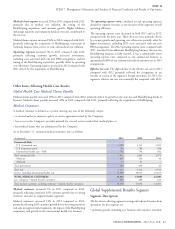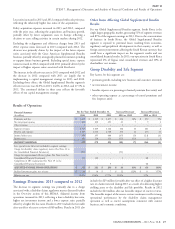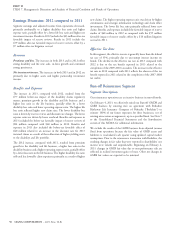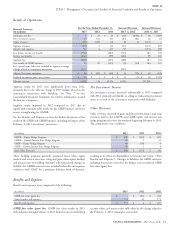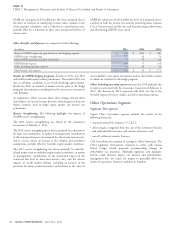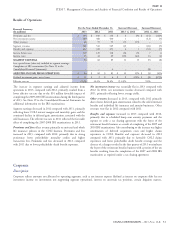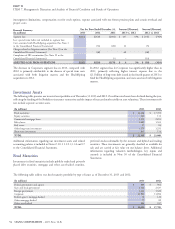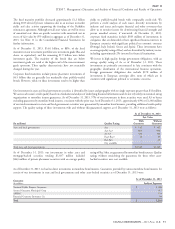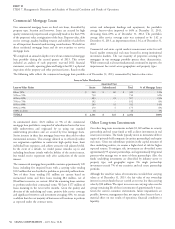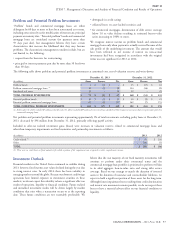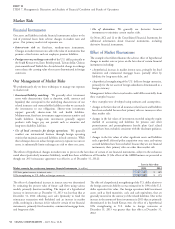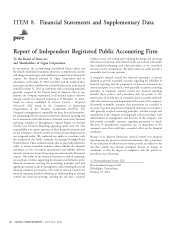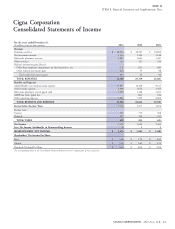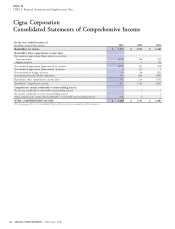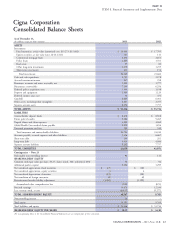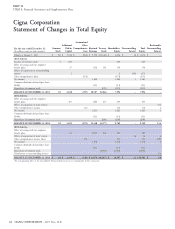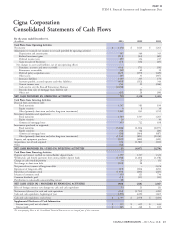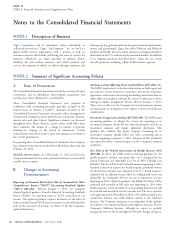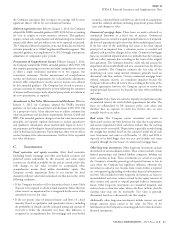Cigna 2013 Annual Report Download - page 89
Download and view the complete annual report
Please find page 89 of the 2013 Cigna annual report below. You can navigate through the pages in the report by either clicking on the pages listed below, or by using the keyword search tool below to find specific information within the annual report.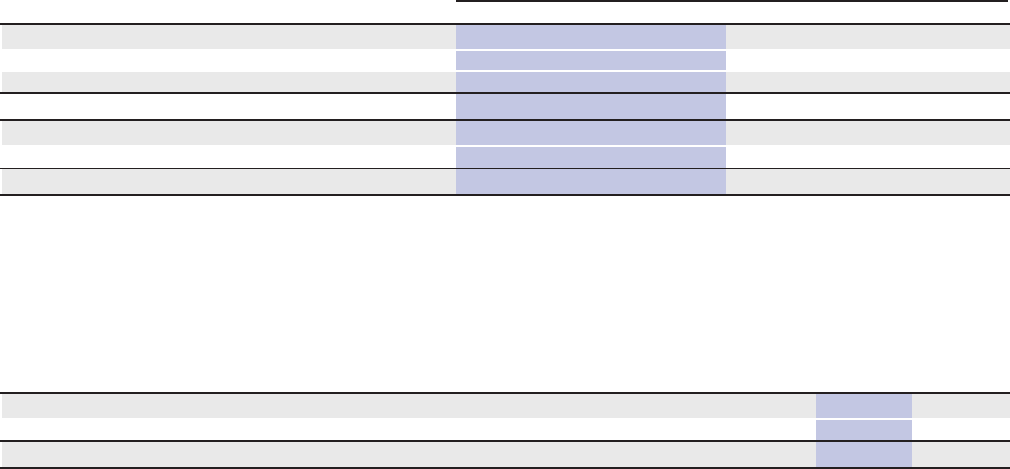
PART II
ITEM 7. Management’s Discussion and Analysis of Financial Condition and Results of Operations
downgrade in credit rating;
Problem and Potential Problem Investments
collateral losses on asset-backed securities; and
‘‘Problem’’ bonds and commercial mortgage loans are either
delinquent by 60 days or more or have been restructured as to terms, for commercial mortgages, deterioration of debt service coverage
including concessions by us for modification of interest rate, principal below 1.0 or value declines resulting in estimated loan-to-value
payment or maturity date. ‘‘Potential problem’’ bonds and commercial ratios increasing to 100% or more.
mortgage loans are considered current (no payment more than We recognize interest income on problem bonds and commercial
59 days past due), but management believes they have certain mortgage loans only when payment is actually received because of the
characteristics that increase the likelihood that they may become risk profile of the underlying investment. The amount that would
problems. The characteristics management considers include, but are have been reflected in net income if interest on non-accrual
not limited to, the following: investments had been recognized in accordance with the original
request from the borrower for restructuring; terms was not significant for 2013 or 2012.
principal or interest payments past due by more than 30 but fewer
than 60 days;
The following table shows problem and potential problem investments at amortized cost, net of valuation reserves and write-downs:
December 31, 2013 December 31, 2012
(In millions)
Gross Reserve Net Gross Reserve Net
Problem bonds $ 2 $ (2) $ – $ 35 $ (17) $ 18
Problem commercial mortgage loans
(1)
41 (3) 38 104 (16) 88
Foreclosed real estate 29 – 29 29 – 29
TOTAL PROBLEM INVESTMENTS $ 72 $ (5) $ 67 $ 168 $ (33) $ 135
Potential problem bonds $ 30 $ (9) $ 21 $ 30 $ (9) $ 21
Potential problem commercial mortgage loans 135 (8) 127 162 (7) 155
TOTAL POTENTIAL PROBLEM INVESTMENTS $ 165 $ (17) $ 148 $ 192 $ (16) $ 176
(1) At December 31, 2013, included $7 million and at December 31, 2012, included $29 million of restructured loans classified in Other long-term investments that were previously reported in
commercial mortgage loans.
Net problem and potential problem investments representing approximately 1% of total investments, excluding policy loans at December 31,
2013, decreased by $96 million from December 31, 2012, primarily reflecting payoff activity.
Included in after-tax realized investment gains (losses) were increases in valuation reserves related to commercial mortgage loans and
other-than-temporary impairments on fixed maturities and partnership investments as follows:
(In millions)
2013 2012
Credit-related
(1)
$ (5) $ (13)
Other (14) (1)
TOTAL $ (19) $ (14)
(1) There were no credit losses on fixed maturities for which a portion of the impairment was recognized in other comprehensive income.
believe that the vast majority of our fixed maturity investments will
Investment Outlook
continue to perform under their contractual terms and the
Financial markets in the United States continued to stabilize during commercial mortgage loan portfolio is positioned to perform well due
2013; however, fixed income asset values declined during the year due to its solid aggregate loan-to-value ratio and strong debt service
to rising interest rates. In early 2014, there has been volatility in coverage. Based on our strategy to match the duration of invested
emerging markets around the globe. Because our domestic and foreign assets to the duration of insurance and contractholder liabilities, we
operations have limited exposure to investment securities in these expect to hold a significant portion of these assets for the long term.
markets, we do not expect this volatility to have a significant effect on Although future impairment losses resulting from credit deterioration
results of operations, liquidity or financial condition. Future realized and interest rate movements remain possible, we do not expect these
and unrealized investment results will be driven largely by market losses to have a material adverse effect on our financial condition or
conditions that exist when a transaction occurs or at the reporting liquidity.
date. These future conditions are not reasonably predictable. We
CIGNA CORPORATION - 2013 Form 10-K 57
•
•
•
•
•


